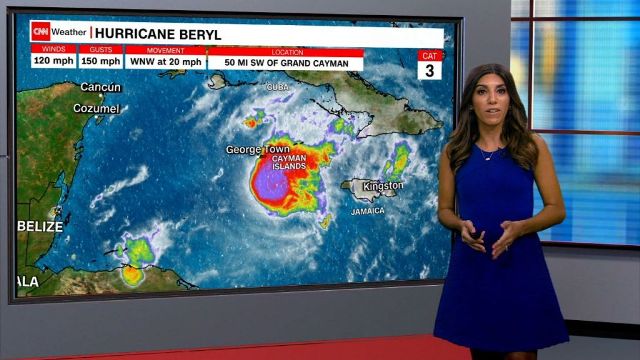Hurricane Beryl has caused between $28 billion and $32 billion in total damage and economic loss in the United States, AccuWeather’s preliminary estimate indicates.
AccuWeather, which was the first to forecast the storm, issued a warning more than 24 hours before any other source. This early prediction provided crucial life-saving notice to those in the eastern Caribbean Islands.
AccuWeather accurately predicted that Beryl would intensify into a major hurricane before any other source, which it did, impacting these islands as a Category 4 hurricane with maximum sustained winds of 140 mph, resulting in significant damage.
Beryl moved through the Caribbean, affecting Jamaica and the Yucatan Peninsula with heavy impacts. The storm turned northwestward toward the central Texas coast, making landfall as a Category 1 hurricane. Beryl brought a damaging storm surge of 6-10 feet and hurricane-force winds to areas near and east of landfall, including the Houston Metro area.
“Beryl will go down in the history books as a record-shattering hurricane. It was the earliest Category 5 hurricane on record in the Atlantic basin, causing catastrophic damage in the Windward Islands. Beryl brought impacts to Jamaica and the Cayman Islands before slamming into the Yucatan Peninsula of Mexico with damaging wind and storm surge,” said AccuWeather Chief Meteorologist Jon Porter.
“Very warm waters helped Beryl intensify in its final hours over the Gulf of Mexico before it made landfall in southeast Texas, amplifying the damage and impacts. Millions of people were left without power in scorching summer heat. Several people were tragically killed in flood waters and by falling trees.”
The Houston area, already reeling from a destructive thunderstorm in May, was particularly hard hit. Beryl brought 8-12 inches of rain combined with high winds, leading to widespread flooding and wind damage. More than 2 million homes and businesses lost power. Extensive cleanup will be required, with numerous trees and power lines downed and many streets flooded.
It may take several days or even a week or more to restore power to the entire area. The summer heat and humidity in Texas, with AccuWeather RealFeel Temperatures of 100-105 degrees Fahrenheit, pose an elevated risk of heat exhaustion or heat stroke for those cleaning up storm debris and repairing damage without access to air conditioning, fans, or cooler shaded areas.
The storm spawned numerous tornadoes and flooding from eastern Texas to Arkansas and southeastern Missouri, moving toward the Midwest and New England. Flooding rain is the primary threat, along with severe thunderstorms and isolated tornadoes east of the storm’s path.
AccuWeather’s damage estimate accounts for the destruction of homes, businesses, infrastructure, facilities, roadways, and vehicles, as well as power outages, which result in food spoilage and interruption to medical care. The estimate also includes expected damage over the coming days as Tropical Rainstorm Beryl moves through the Midwest, Great Lakes, and into central and northern New England, causing flooding, localized tornadoes, and gusty winds.
Last year, Hurricane Idalia caused $18-20 billion in damage and economic loss in Florida, while Hurricane Ian in 2022 caused $180-210 billion. Hurricane Harvey, which impacted a similar area in Texas in 2017, caused $230 billion in total damage and economic loss when it stalled over southeast Texas, producing record rainfall and catastrophic flooding.
UNICEF said at least 3 million children are at risk as Hurricane Beryl hits the Caribbean. UNICEF has requested $12.4 million to prepare for emergencies in Latin America and the Caribbean, including in countries in the Caribbean Basin.
Baburajan Kizhakedath

